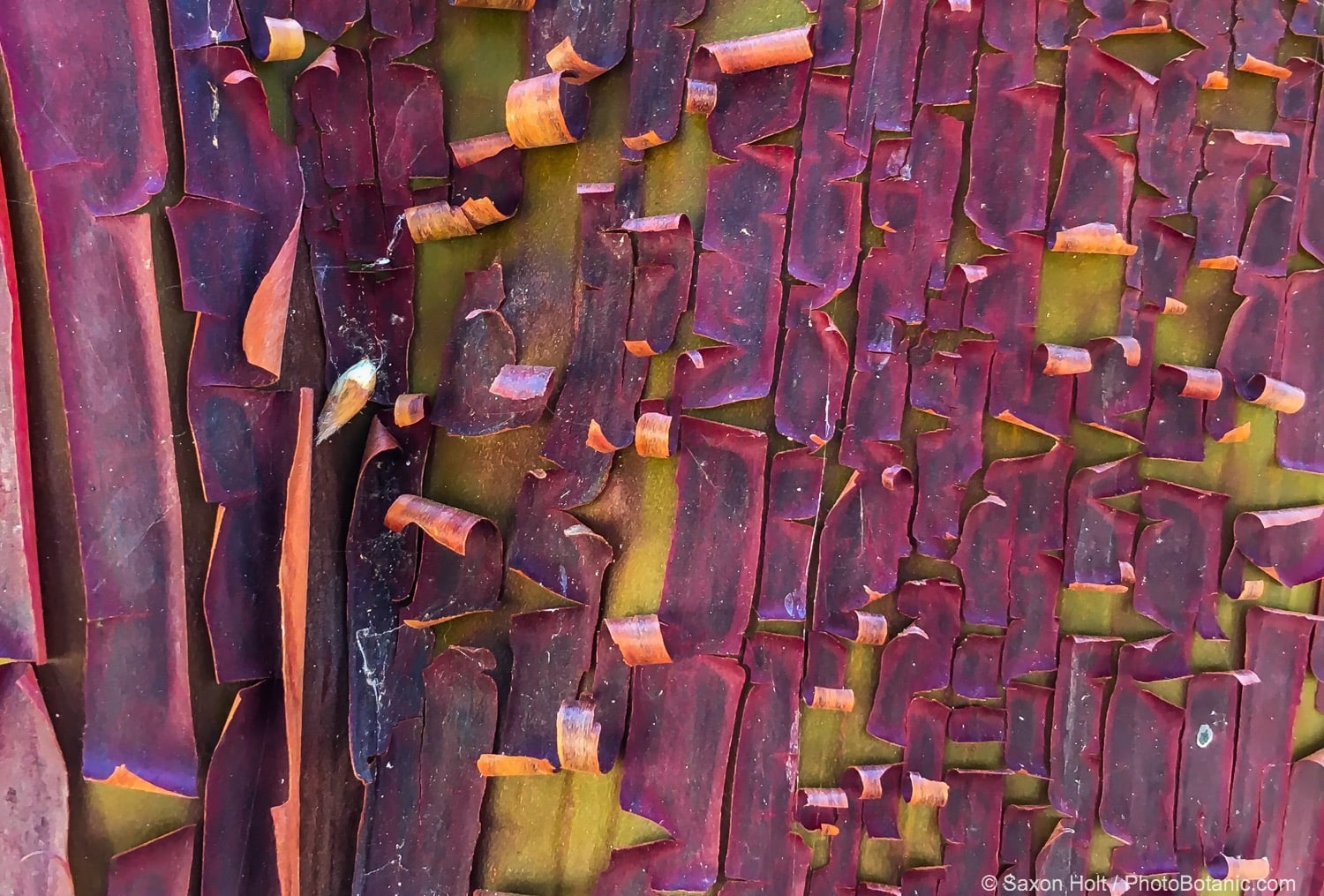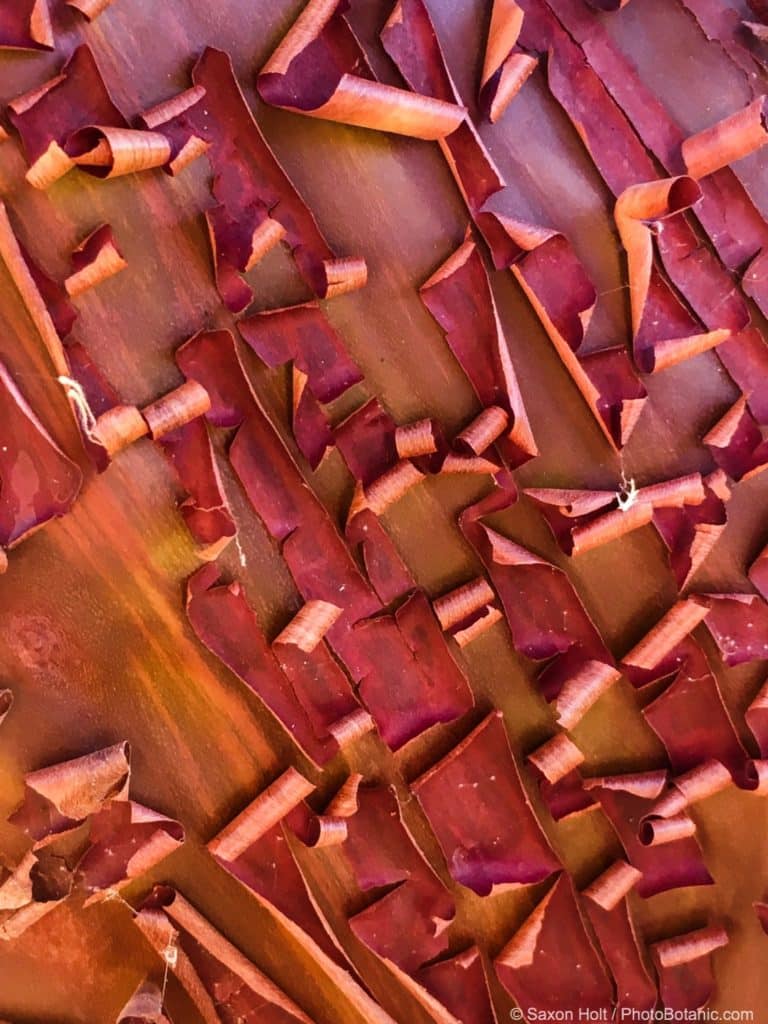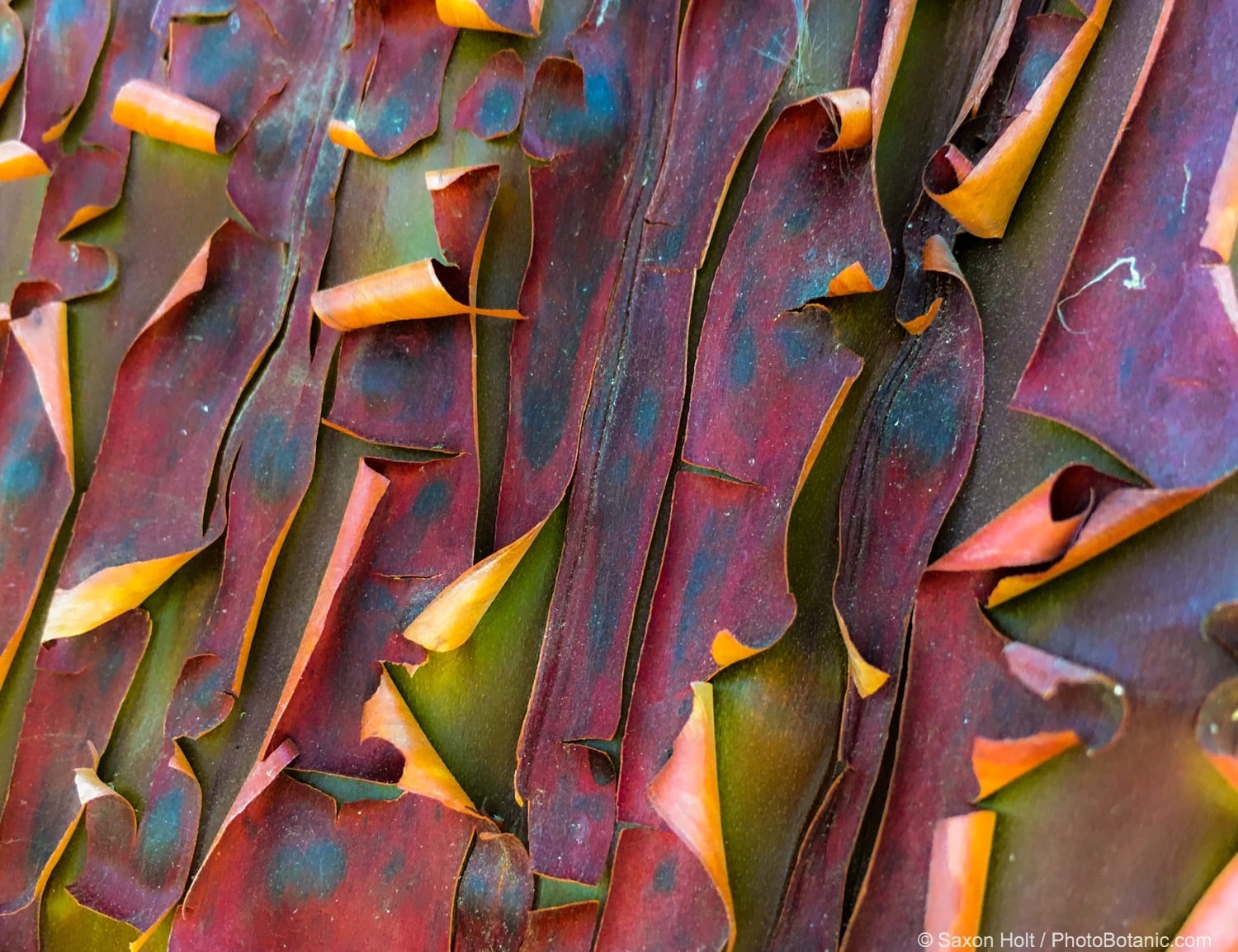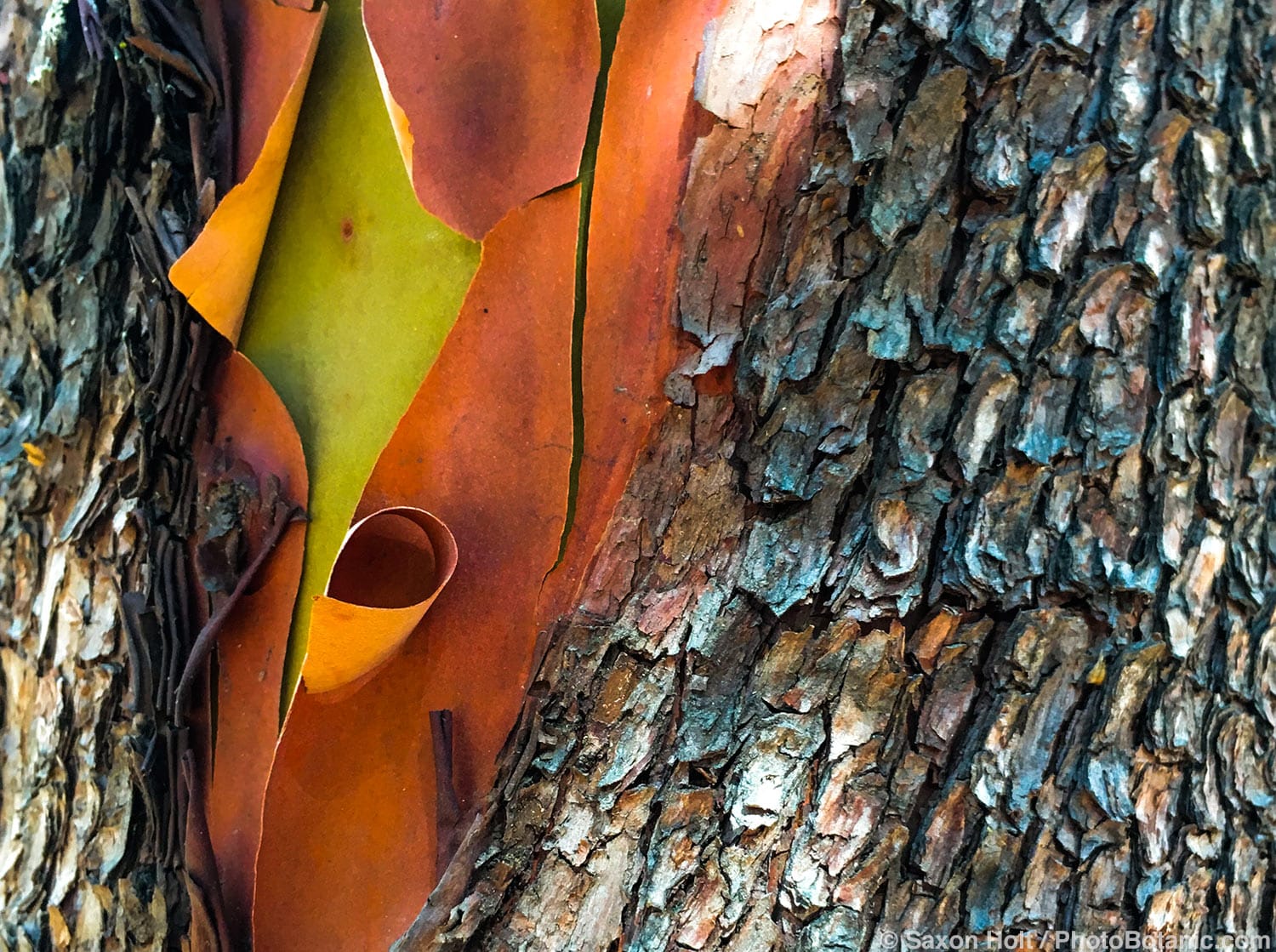In a not uncommon response to summer-dry heat, a number of trees and shrubs shed their bark in the middle of the summer.

Summertime bark break, manzanita (Arctostaphylos)
In California, this exfoliation seems to happen almost instantly in madrone (Arbutus menziesii) and many species of manzanita (Arctostaphylos) with great delight to any observer who watches these natives with any regularity.
One day a walk in the dry woods, the always beautiful red mahogany bark will be split open, as the bark rolls back and the girth expands just that much more. In manzanita the bark will curl back in neat, tight curls.

Manzanita – summertime bark break, exfoliating
Madrone seems to come off in ribbons.

Madrone, Arbutus menziesii – summertime bark break
Both of these genera are well adapted to summer-dry conditions but one must be careful to match the right species to the microclimate. Manzanitas are native to many parts of California and gardeners would do well to check with local nurseries or with your local native plant society chapter to find the best ones.
In nature madrones are found in dry, sloping conditions, often in the company of taller bay and oak trees, and they usually need just the right soil mycorrhizal relationships to thrive. Gardeners might consider Arbutus unedo, a Mediterranean native, more adapted to garden conditions. The bark is lovely and the large fruit are highly ornamental but you don’t get the exploding bark.

Madrone – summertime bark break



Leave A Comment